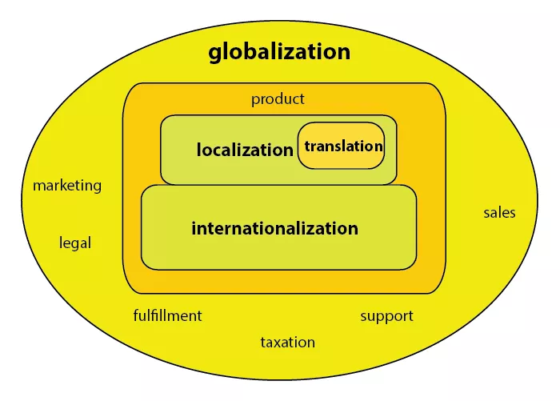With the right localization strategy your company can market its solutions on a global scale, reaching millions of potential customers worldwide. Translations Planet is your trusted vendor to continuously localize your products. So your team asks you to translate a certain product into Spanish and French. Your Google search for local translation vendors takes you to landing pages about services for both “translation” and “localization”. You can’t decide which one to choose. The obvious question is “What’s the difference?”, and this is a great question because understanding what these terms mean can significantly improve the quality of your multilingual content. Translation focuses on conveying the original message word for word into the target language. Translation is just one part of localization. The priority of localization is to adapt a message to meet both the linguistic and cultural needs of a specific region or language. Let’s take one step further and examine what is the difference between globalization (G11N), internationalization (i18N), translation (T9N), and localization (L10N). This diagram perfectly summarizes the relationship between the respective concepts in the context of software.

Source: Adobe Globalization Blog “Globalization Myth Series”

What’s The Difference?
Translation is one part of Localization
Internationalization is a pre-requisite of Localization
Internationalization and Localization are both parts of Globalization
Globalization includes many business-related activities outside of the product itself
Localization is key to marketing your products directly to new prospects and while the expense may seem large initially it is worth considering that in 2001 the Localization Institute Standards Association (LISA) reported that on average for every $1 spent on localization $10 of additional revenue was realized. Since then, LISA members have reported 15–25% annual productivity increases on their localization spending. In 2007 LISA reported that companies received approximately $25 of additional revenue for every $1 spent on localization. This means that today companies are receiving more than $50 of additional revenue for every $1 spent on localization.
Terminology explained
Globalization (G11N)
refers to the process that addresses business issues associated with launching a product globally, such as integrating localization throughout a company after proper internationalization and product design. In G11N, the common abbreviation for globalization, the 11 refers to the 11 letters between the g and the n.
Internationalization (i18N)
is the process of designing a software application so that it can be adapted to various languages and regions without engineering changes. This involves supporting different currency, number separators, dates. In i18N, the common abbreviation for internationalization, the 18 stands for the number of letters between the first i and last n in internationalization.
Localization (L10N)
is the process of translating and adapting this internationalized software application for a specific region or language. In L10N, the common abbreviation for localization, the 10 refers to the ten letters between the l and the n. The capital L in L10N helps to distinguish it from the lowercase i in i18N.
Translation (T9N)
is simply converting the meaning of text from one language into another. In T9N, the common abbreviation for translation, the 9 refers to the nine letters between the t and the n.
As your business grows your translation needs will grow as well and your organization will have to move quickly up through stages of localization maturity in order to be competitive globally. Let's take this journey together!

How to order
SEND US THE SOURCE DOCUMENT(S) AND THE REQUIRED TIME FRAME
WE WILL SEND YOU A DETAILED QUOTE FOR THE REQUESTED SERVICES ALONG WITH AN INVOICE. IF YOU ARE WILLING TO SIGN A SERVICE AGREEMENT YOU WILL HAVE THE OPTION TO MAKE PAYMENT AFTER THE COMPLETION OF THE PROJECT
YOU APPROVE THE QUOTE, SIGN AN AGREEMENT OR MAKE A PREPAYMENT
Translation process
Project Kickoff
Includes terminology research. Assignment of a dedicated project manager and qualified translators.
Gather information from client
Analysis of source files
Analysis of legacy translation memory
Study of previous translations
Create/Update/Approve Glossary
Formation of the team
Translation, Editing, Proofreading (TEP)
The project manager works closely with translators, editors, proofreaders, and the client.
Translation assigned to native translators per region
Editing by a second linguist
Proofreading once the text has been edited
Queries and Answers
Quality Assurance (QA)
Spot check localized content. Language check. Terminology check. Consistency check.
Checks for incosistencies
QA Sampling
Evaluate and update translator punctuality rating
Project Wrap-up
Client feedback integration and final delivery.
You provide feedback on the first draft
We edit the translation project and update translation memory as needed
We deliver the final translation
Project Retrospective
We share lessons learned from the project with all stakeholders to improve future translation quality.
Each member of the team members answers the following questions:
What worked well?
What did not work well?
What actions can we take to improve our process going forward?
Project End
Invoicing. Project closure and archiving.
We prepare and send the invoice for the project
We close the project and archive it.




